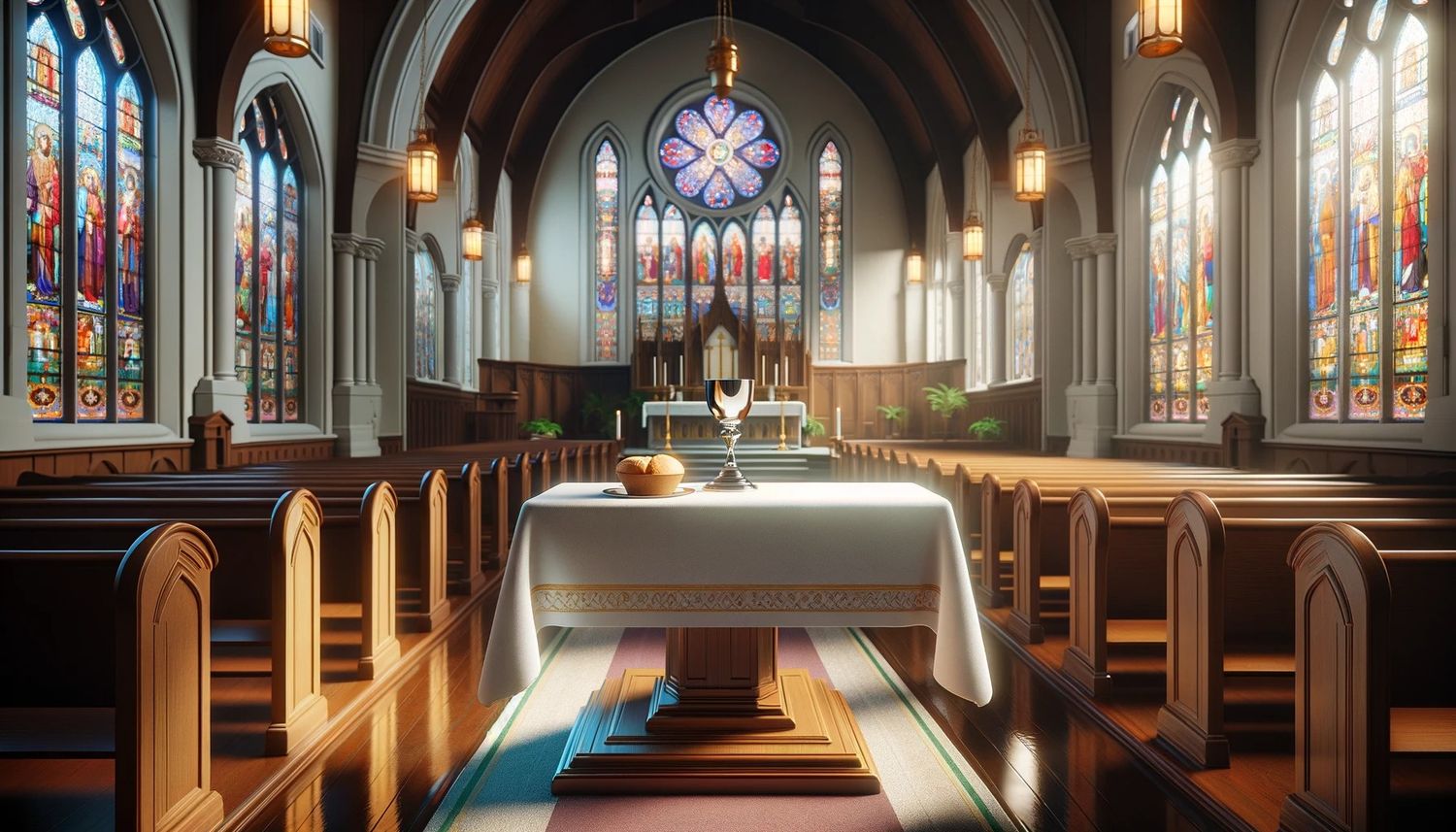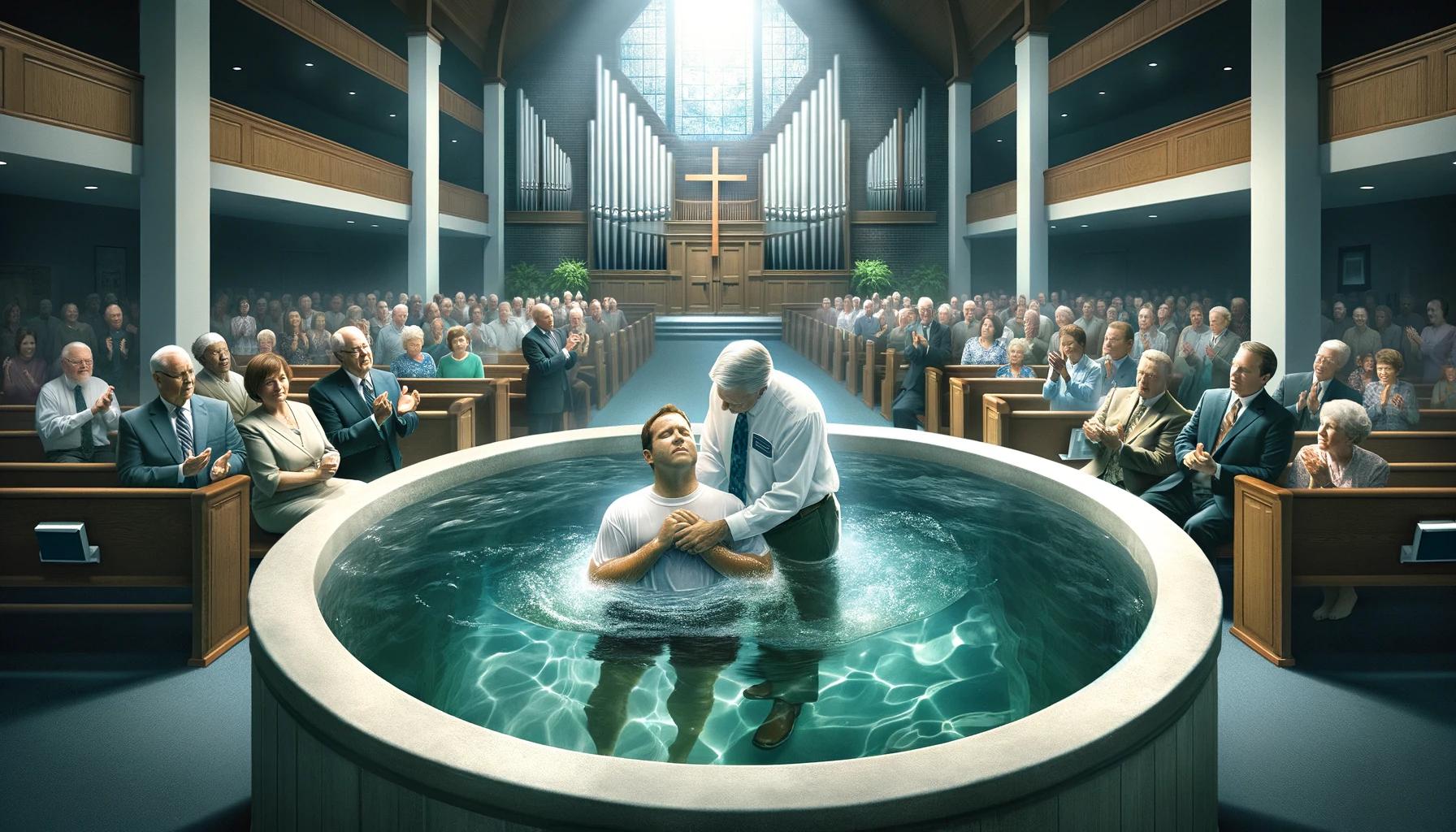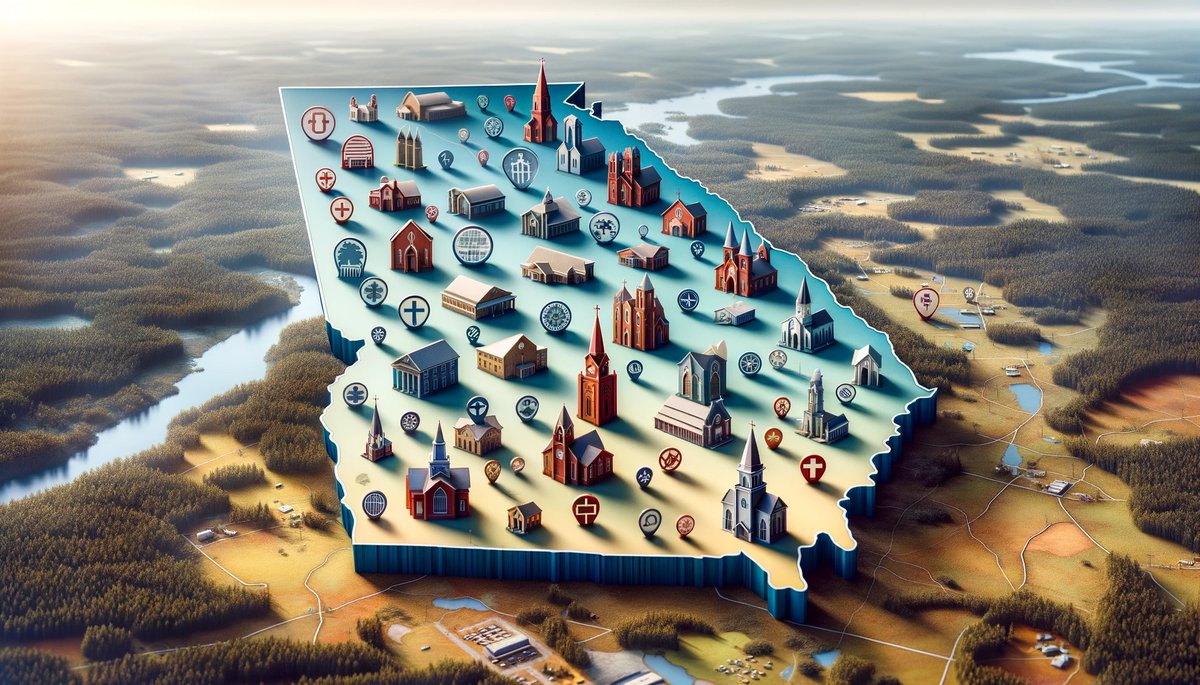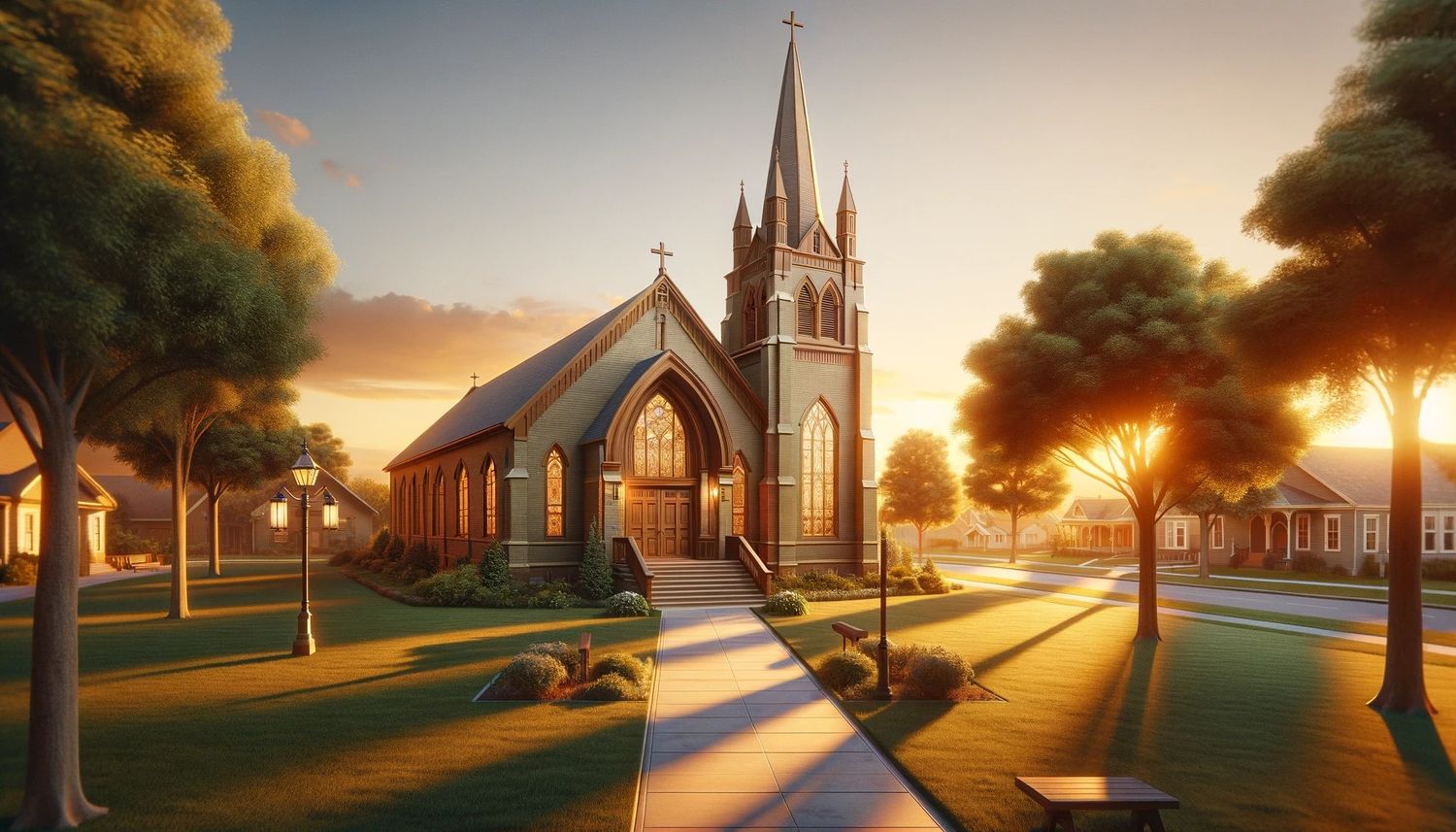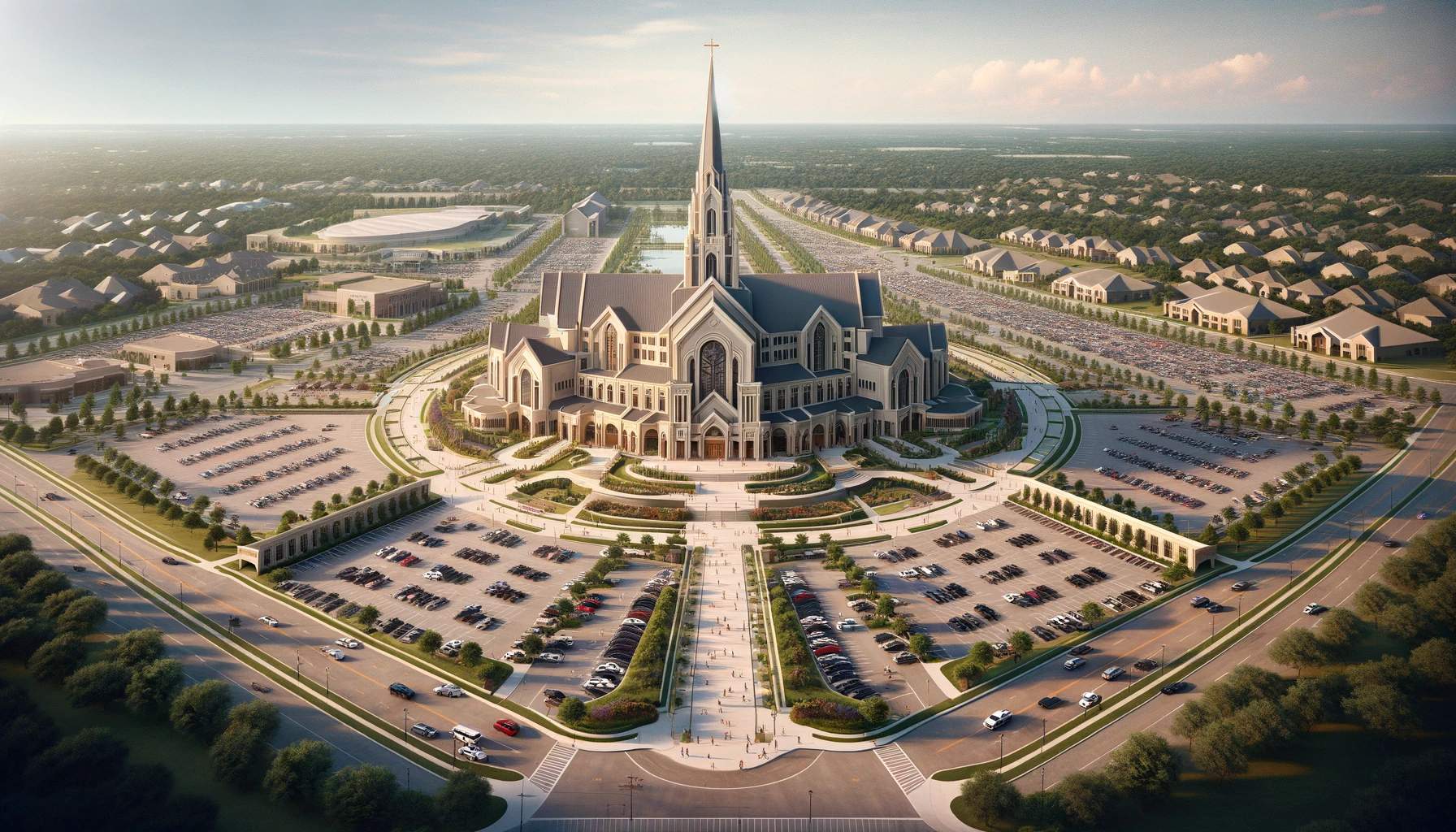Home>Theology and Spirituality>How Many Southern Baptist Churches Are There In The United States


Theology and Spirituality
How Many Southern Baptist Churches Are There In The United States
Published: February 20, 2024
Jason DeRose, Managing Editor at Christian.net, uses his expertise in religion and journalism to deepen understanding of faith's societal impacts. His editorial leadership, coupled with a strong academic background, enriches the platform’s diverse content, earning him recognition in both journalism and religious circles.
Discover the latest statistics on Southern Baptist churches in the US and gain insights into the theology and spirituality of the denomination. Explore the extensive network and impact of Southern Baptist congregations.
(Many of the links in this article redirect to a specific reviewed product. Your purchase of these products through affiliate links helps to generate commission for Christian.net, at no extra cost. Learn more)
Table of Contents
Introduction
Southern Baptist churches hold a significant place in the religious landscape of the United States. With their rich history, diverse theological perspectives, and widespread influence, these churches have played a pivotal role in shaping the spiritual fabric of the nation. Understanding the scope and impact of Southern Baptist churches requires a comprehensive exploration of their historical roots, growth patterns, regional distribution, and the various factors that have influenced their proliferation.
The Southern Baptist Convention, the largest Protestant denomination in the United States, has a profound impact on the religious and cultural tapestry of the nation. As of 2021, the Southern Baptist Convention comprises over 47,000 individual churches, making it a formidable force in American Christianity. This vast network of congregations represents a diverse array of communities, each contributing to the rich tapestry of beliefs, traditions, and practices within the denomination.
Exploring the history, growth, and regional distribution of Southern Baptist churches provides valuable insights into the evolving landscape of religious practice and belief in the United States. Additionally, understanding the factors that have influenced the proliferation and decline of these churches offers a nuanced perspective on the complex interplay of social, cultural, and theological dynamics that shape religious communities.
In this article, we will delve into the historical foundations of Southern Baptist churches, examine their growth and decline over time, analyze their regional distribution across the United States, and explore the multifaceted factors that have contributed to the number of Southern Baptist churches in the nation. By shedding light on these aspects, we can gain a deeper appreciation for the enduring impact of Southern Baptist churches on American society and spirituality.
History of Southern Baptist Churches in the United States
The history of Southern Baptist churches in the United States is a tapestry woven with threads of faith, resilience, and cultural evolution. The roots of this denomination can be traced back to the early 17th century when English Separatists and Puritans sought religious freedom in the New World. As the American colonies took shape, so did the Baptist movement, characterized by its emphasis on individual conscience, believer's baptism, and congregational autonomy.
The Southern Baptist Convention officially formed in 1845 in Augusta, Georgia, as a result of a regional split over the issue of slavery. This marked a defining moment in the history of Southern Baptist churches, as it set them on a distinct trajectory within the broader Baptist tradition. The denomination's name, "Southern," reflects its historical and geographical origins, rooted in the southern states of the U.S.
Throughout the 19th and 20th centuries, Southern Baptist churches navigated through significant social and theological shifts, including the Civil War, Reconstruction, and the Civil Rights Movement. These churches became intertwined with the cultural and political landscape of the South, shaping and being shaped by the region's complex history.
The conservative resurgence in the late 20th century brought about theological realignment within the Southern Baptist Convention, reaffirming its commitment to biblical inerrancy and traditional Christian values. This period of doctrinal reaffirmation and denominational identity solidification left an indelible mark on the history of Southern Baptist churches, influencing their theological outlook and organizational structure.
Today, the Southern Baptist Convention stands as a multifaceted tapestry of beliefs, practices, and traditions, reflecting the diverse cultural and theological landscape of the United States. The historical journey of Southern Baptist churches is marked by resilience, adaptation, and a steadfast commitment to their core values, making them a significant and enduring presence in American religious life.
Growth and Decline of Southern Baptist Churches
The growth and decline of Southern Baptist churches in the United States reflect a complex interplay of demographic, cultural, and theological factors. Over the years, the denomination has experienced fluctuations in its congregational numbers, presenting a dynamic landscape of expansion and retraction.
Historically, Southern Baptist churches witnessed significant growth during the 20th century, propelled by factors such as population shifts, evangelistic fervor, and cultural influence. The post-World War II era saw a surge in church attendance and membership, with Southern Baptist congregations flourishing in the midst of a burgeoning American population. This period of expansion was characterized by a robust emphasis on evangelism, missions, and community outreach, which contributed to the widespread proliferation of Southern Baptist churches across the nation.
However, in more recent years, the denomination has grappled with a plateauing and, in some regions, a decline in congregational numbers. This trend has been attributed to various factors, including changing societal attitudes towards organized religion, generational shifts in religious affiliation, and internal theological debates within the denomination. Additionally, demographic changes, such as urbanization and migration patterns, have influenced the distribution and vitality of Southern Baptist churches in different regions of the United States.
Despite these challenges, it is important to note that the growth and decline of Southern Baptist churches are not uniform across all regions. While some areas have experienced a decline in congregational numbers, others have seen continued growth and vitality within the denomination. This regional variation underscores the nuanced nature of the denomination's trajectory, shaped by a myriad of local, cultural, and contextual dynamics.
The ebb and flow of congregational growth within the Southern Baptist Convention reflect the broader landscape of religious affiliation and practice in the United States. As the denomination continues to navigate the complexities of contemporary society, it grapples with the imperative to adapt to changing cultural currents while remaining steadfast in its theological convictions. The evolving story of growth and decline within Southern Baptist churches serves as a testament to the dynamic nature of religious communities and their enduring impact on the spiritual tapestry of the nation.
Regional Distribution of Southern Baptist Churches
The regional distribution of Southern Baptist churches in the United States paints a diverse and intricate portrait of congregational presence across different geographical landscapes. While the Southern Baptist Convention is rooted in its historical ties to the southern states, its reach extends far beyond the boundaries of the South, encompassing a wide spectrum of regional nuances and cultural dynamics.
In the southern region of the United States, Southern Baptist churches have historically held a prominent and pervasive presence, reflecting the denomination's deep roots in the cultural and religious fabric of the South. States such as Texas, Georgia, Alabama, and North Carolina have long been strongholds of Southern Baptist congregations, with a dense network of churches serving as integral pillars of local communities. The influence of Southern Baptist churches in the South extends beyond religious practice, shaping social norms, community engagement, and cultural identity within the region.
Beyond the South, Southern Baptist churches have established a significant presence in various regions across the country. The Midwest, Southwest, and West Coast have witnessed the proliferation of Southern Baptist congregations, contributing to the denomination's expansive reach and diverse regional impact. This geographical diversity underscores the adaptability and resonance of Southern Baptist churches in engaging with a wide array of cultural and demographic contexts.
Furthermore, the urban-rural divide plays a pivotal role in the regional distribution of Southern Baptist churches. While rural areas often feature a higher concentration of Southern Baptist congregations, urban centers have also become focal points for the denomination's presence. The ability of Southern Baptist churches to navigate the complexities of both rural and urban landscapes speaks to their adaptive capacity and their commitment to engaging with diverse community settings.
The regional distribution of Southern Baptist churches reflects the denomination's multifaceted engagement with the diverse tapestry of American society. By establishing a robust presence across various regions and demographic landscapes, Southern Baptist churches have woven themselves into the intricate fabric of American religious life, contributing to the rich mosaic of faith expressions and community dynamics throughout the nation.
Factors Influencing the Number of Southern Baptist Churches
The number of Southern Baptist churches in the United States is influenced by a myriad of interconnected factors that shape the denomination's congregational growth, decline, and regional distribution. These factors encompass demographic trends, cultural dynamics, theological shifts, and societal changes, all of which contribute to the evolving landscape of Southern Baptist congregations across the nation.
Demographic shifts play a significant role in influencing the number of Southern Baptist churches. Population movements, migration patterns, and generational changes impact the distribution and vitality of congregations within the denomination. Urbanization, in particular, has led to the emergence of new population centers and the reconfiguration of existing communities, influencing the spatial distribution of Southern Baptist churches and shaping their congregational numbers in different regions.
Cultural dynamics and societal attitudes towards organized religion also exert a profound influence on the number of Southern Baptist churches. Changing patterns of religious affiliation, evolving social norms, and the broader cultural climate impact the receptivity of individuals and communities towards Southern Baptist congregations. Additionally, the denomination's engagement with contemporary cultural issues and its ability to resonate with diverse demographic groups contribute to the establishment and growth of congregations in various contexts.
Theological and doctrinal considerations within the Southern Baptist Convention are integral to understanding the factors that influence congregational numbers. The denomination's theological stance, ecclesiastical policies, and doctrinal emphases shape the formation and sustainability of churches within its fold. Debates over theological interpretation, denominational identity, and ecclesiastical practices impact the congregational landscape, influencing the establishment, growth, and, in some cases, the decline of Southern Baptist churches.
Furthermore, the denomination's commitment to evangelism, missions, and community engagement serves as a driving force behind the establishment and expansion of Southern Baptist churches. The outreach efforts, missional initiatives, and congregational planting strategies implemented by the denomination contribute to the proliferation of churches in diverse geographical and cultural contexts, reflecting the denomination's proactive approach to congregational growth and outreach.
The interplay of these multifaceted factors underscores the dynamic nature of the Southern Baptist congregational landscape, highlighting the complex web of influences that shape the number and distribution of churches within the denomination. By navigating the intricate interplay of demographic, cultural, theological, and missional dynamics, Southern Baptist churches continue to adapt, grow, and engage with the evolving contours of American religious life.
Conclusion
In conclusion, the landscape of Southern Baptist churches in the United States is a tapestry woven with historical significance, regional diversity, and dynamic influences. The denomination's rich history, rooted in the complexities of American culture and theology, has shaped its trajectory and enduring impact on the nation's religious fabric. From its origins in the southern states to its widespread presence across diverse regions, Southern Baptist churches have left an indelible mark on the spiritual landscape of the country.
The historical journey of Southern Baptist churches reflects resilience, adaptation, and a steadfast commitment to core values amidst societal and theological shifts. The denomination's growth and decline over time mirror the broader complexities of religious affiliation and practice in the United States, highlighting the nuanced interplay of demographic, cultural, and theological factors that shape congregational numbers.
The regional distribution of Southern Baptist churches underscores the denomination's multifaceted engagement with the diverse tapestry of American society. From the strongholds in the South to the burgeoning congregations in the Midwest, Southwest, and West Coast, Southern Baptist churches have demonstrated adaptability and resonance across varied geographical and demographic landscapes, contributing to the rich mosaic of faith expressions and community dynamics throughout the nation.
The number of Southern Baptist churches is influenced by a complex web of factors, including demographic shifts, cultural dynamics, theological considerations, and missional endeavors. Navigating these influences, the denomination continues to adapt, grow, and engage with the evolving contours of American religious life, demonstrating a commitment to relevance and resilience in an ever-changing societal landscape.
As Southern Baptist churches continue to navigate the complexities of contemporary society, they grapple with the imperative to adapt to changing cultural currents while remaining steadfast in their theological convictions. The evolving story of growth and decline within Southern Baptist churches serves as a testament to the dynamic nature of religious communities and their enduring impact on the spiritual tapestry of the nation.
In essence, the enduring legacy of Southern Baptist churches in the United States is a testament to their ability to navigate the complexities of history, culture, and theology, while remaining steadfast in their commitment to faith, community, and the enduring pursuit of spiritual significance in the lives of individuals and communities across the nation.


